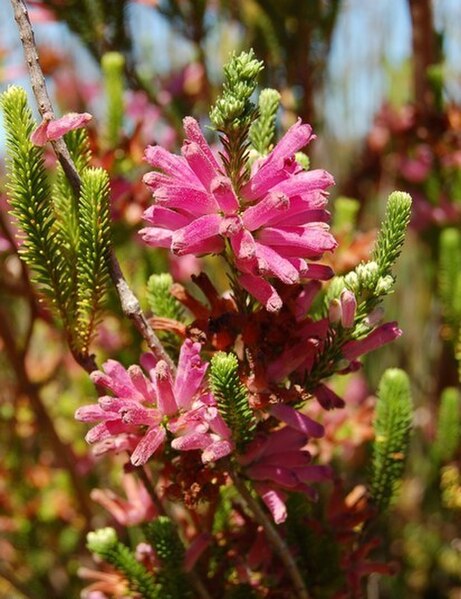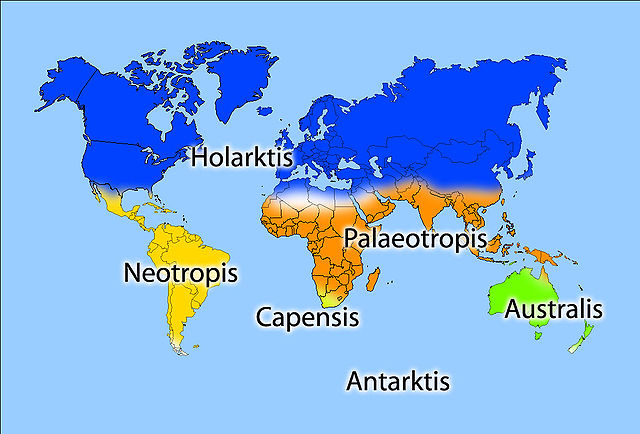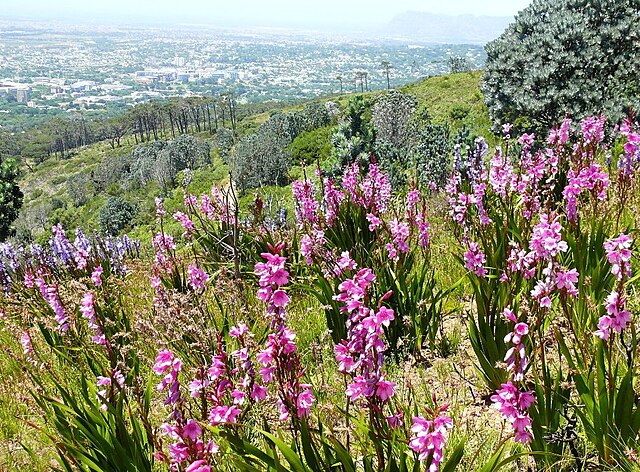Cape Flats Sand Fynbos (CFSF), previously known as Sand Plain Fynbos, is a critically endangered vegetation type that occurs only within the city of Cape Town. Less than 1% of this unique lowland fynbos vegetation is conserved.
A surviving remnant of Cape Flats Sand Fynbos at Rondebosch Common.
Heath (Erica spp.), cone-bush and restio specimens.
Erica verticillata is completely endemic to Cape Flats Sand Fynbos. However, it is now classed as extinct in the wild.
The Strawberry Spider head (Serruria aemula) is a critically endangered within the Cape Flats Sand Fynbos ecosystem.
Fynbos is a small belt of natural shrubland or heathland vegetation located in the Western Cape and Eastern Cape provinces of South Africa. This area is predominantly coastal and mountainous, with a Mediterranean climate and rainy winters. The fynbos ecoregion is within the Mediterranean forests, woodlands, and scrub biome. In fields related to biogeography, fynbos is known for its exceptional degree of biodiversity and endemism, consisting of about 80% species of the Cape floral kingdom, where nearly 6,000 of them are endemic. This land continues to face severe human-caused threats, but due to the many economic uses of the fynbos, conservation efforts are being made to help restore it.
Mountain fynbos on the Cape Peninsula
A 360 degree photograph of fynbos in the Groot Winterhoek section of the Cape Fold Mountains about 18 months after a fire. New plants can be seen in various stages of growth following the fire. The infertile white soil that fynbos tends to grow in can also be clearly seen.
The Cape Floral Kingdom (Capensis) is one of only six floristic kingdoms in the world. It is also the smallest and richest per unit of area.
Peninsula Shale Fynbos flora on Devils Peak, Cape Town








